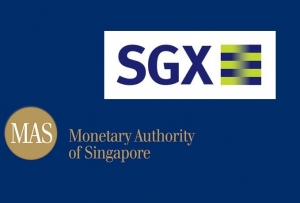On August 6, the Monetary Authority of Singapore (“MAS”) announced the adoption of a new Code of Corporate Governance (the “Code”) along with the new Practice Guidance. The new Code comes after MAS conducted a public consultation on changes to Singaporean corporate governance practices.
The Code will initially take effect for companies with a financial year beginning January 1, 2019, concurrent with changes to Singapore Exchange Limited (“SGX”) Listing Rules, however some of the starker changes will not be phased in until 2022.
In terms of the corporate governance practices, the new Code has made some notable changes, including:
Director Independence and Director Nomination Processes
- From January 1, 2022, independent directors will have a tenure limit of nine years. Where an independent director has served nine consecutive years of service, continuation on the board as an independent director will be subject to a two-tier vote from (i) all shareholders; and (ii) all shareholders, excluding directors, the chief executive officer, and their associates.
- From January 1, 2022, boards must be majority independent where the board chair is not independent, and the Code establishes that regardless of board chair, non-executive directors will need to comprise the majority of boards.
- Companies will be required to disclose the criteria used for selecting, appointing, and re-appointing directors. The criteria will also include disclosure of director relationships and time commitments, including outside board directorships and other professional obligations.
- The threshold to qualify as a “substantial shareholder” will now be 5% of issued share capital, previously 10%.
Remuneration Matters
- Companies must disclose how the board and key management personnel’s remuneration are appropriate and proportionate to a company’s sustained performance and value creation, as based on a company’s strategic objectives.
- Annual reports will include the disclosure of remuneration for each director and CEO, aligned with the top five key management personnel in bands no wider than S$250,000. Companies will also need to disclose the names and remuneration of substantial shareholders, or immediate family members if their remuneration exceeds S$100,000 per year, along with the familial relationship to a director and/or CEO.
Audit, Risk Management, and Internal Controls
- Companies may choose to establish a separate board-level risk committee.
- While there will only be a two-year lookback for former audit partners serving as a director, audit committees should meet independently with external and internal auditors without the presence of management at least annually.
Shareholder Rights and Engagement
- Companies should present proposals at general meetings that are not “bundled”; if any proposals are linked or interdependent, the company should disclose an explanation, including material implications, in the notice of meeting.
- Shareholders would gain the ability to abstain from voting, provided a company’s Constitution or other documents allow for such a voting option.
- Improved disclosure on board and shareholder communication, as part of policies to promote communication with shareholders.
- The development of new mechanisms to enable shareholders to contact companies with questions.
- Strengthened policies regarding engagement with stakeholder groups, including the role of corporate websites to communicate with stakeholders.
The Code also calls for the formation of a Corporate Governance Committee to promote industry-led good corporate practice. As for compliance, the Code is based on a comply-or-explain basis, while any variation from the Code will require explicit explanations from companies as to how the intent of their practices aligns with Code principles.
MAS also released the Practice Guidance, which forms a voluntary guide to best practices. They include:
- Encouraging companies to “go beyond their immediate circles of contacts” and to utilize their party search firms to find suitable candidates.
- Companies should disclose how the skills of its directors meet the needs of the company.
- Setting values on significant or material transactions for recurring director services at S$50,000, or S$200,000 for family members or directors. Amounts beyond these values would help to determine the independence of a director.
- Reviewing director time commitments, with a view toward nomination committees setting a maximum number of boards a director may serve on, especially if the other companies share the same fiscal year-end or reporting timelines.
- For board diversity, it is recommended that peer criteria be used in assessing director and board performance, with consistent benchmarks from year to year.
- Companies are encouraged to develop an annual remuneration report. The remuneration report would provide comprehensive disclosure of remuneration payable to directors and the top five key management personnel.
- Additional disclosure should set out the relationship between remuneration, performance and value creation, including how performance is measured and why the metrics were chosen.
The Code and Practice Guidelines emphasize improved disclosure and transparency in areas such as board independence and remuneration. But, it is notable that in shifting towards a less prescriptive regime, Singapore sidestepped some newer practices of its regional neighbors. Specifically, the Code does not include a target or requirement on gender diversity, whereas Malaysia set a 30% target for “Large Companies”, and India will require companies to have at least one independent female director (currently, Indian companies are required to have one female director on their board, with no independence criteria). Likewise, both India and Australia push for disclosure of a board skills matrix, while Singapore has kept that practice purely voluntary.
The new Code and Practice Guidance represent important steps forward for Singapore, providing a less prescriptive regime as it competes for listings with regional and global competitors such as Hong Kong, New York, and London. For now, both documents maintain the balance between high governance standards and issuer flexibility that will continue to see Singapore rank among the Asia-Pacific’s leaders for corporate governance.
Jeff covers Singapore and other Southeast Asia markets.
